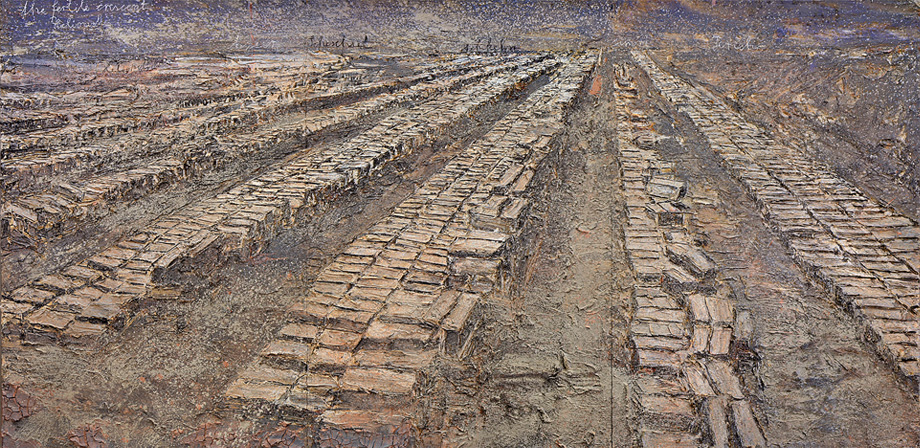

Heliopolis, a painting by Anselm Kiefer from his Fertile Crescent series, depicts one of the oldest and most important cities of Mesopotamia, the “cradle of civilization”. Heliopolis was founded in the period of the Old Kingdom of Ancient Egypt (2686–2181 BC). The Fertile Crescent series was conceived by Kiefer after visiting brickworks in India, where bricks are laid out in seemingly endless rows before being fired. The architectural forms in this series are meant to embody human experience as an endless cycle of creation and destruction. This principle is also built into the technique of the painting: Kiefer first applies several thick layers of paint, sand and other materials to the canvas and then cuts into them to generate new forms.
Kiefer's works – paintings, sculptures and installations – are large-scale, emotionally charged and confrontational. The artist draws on history and the human character, frequently using images from the Second World War. He pushes the boundaries of artistic convention by making use of non-traditional materials such as sand, twigs and soil.
Kiefer was born in 1945 in Donaueschingen, Germany. He currently lives and works in Paris.